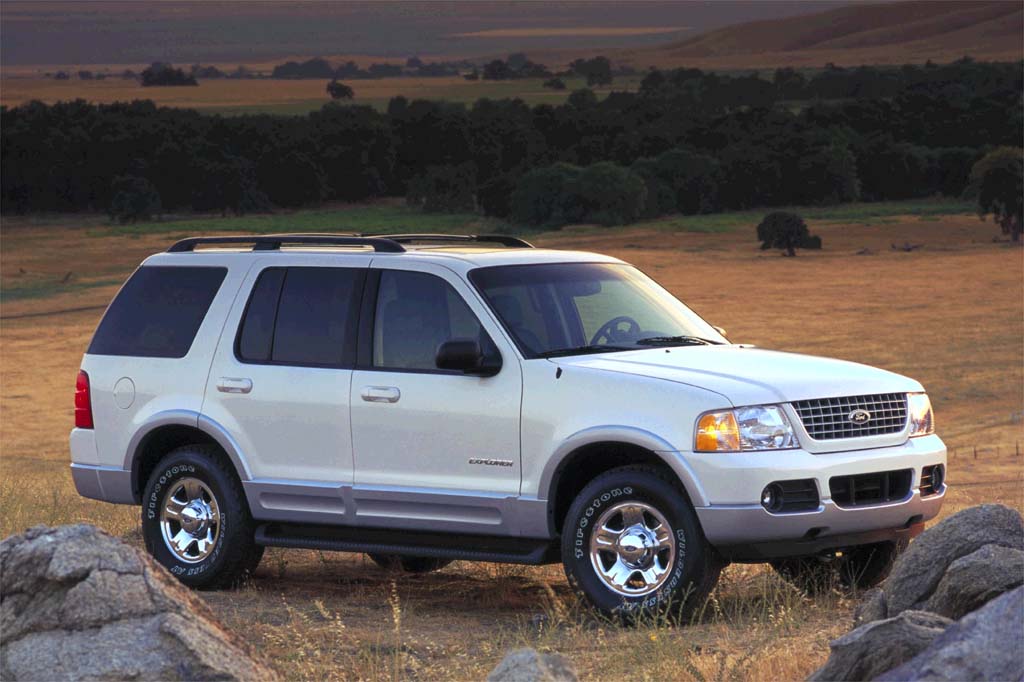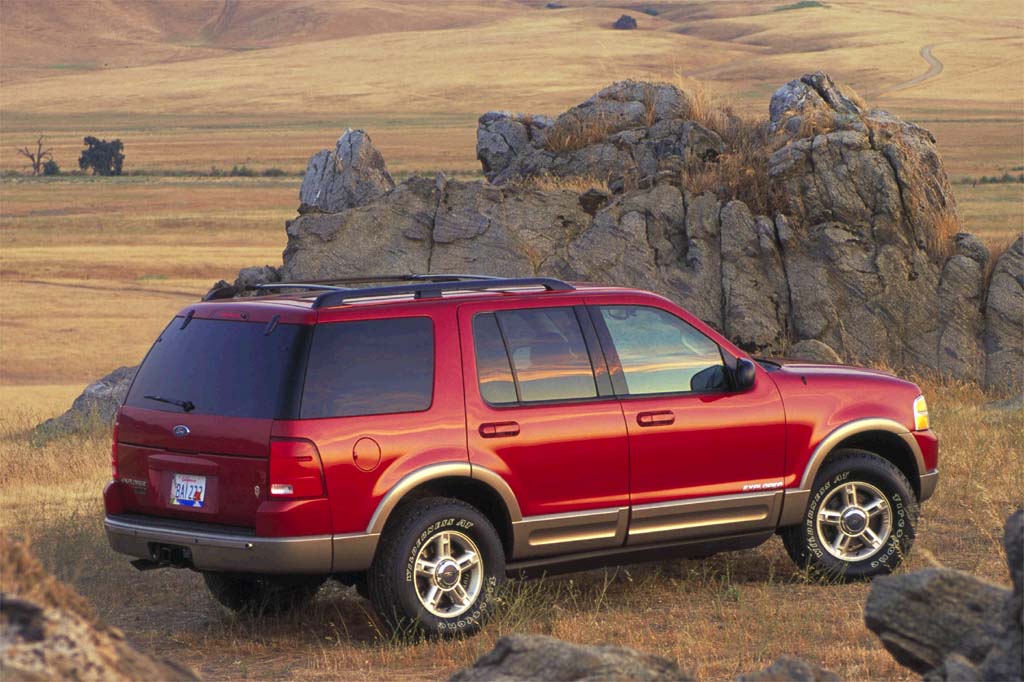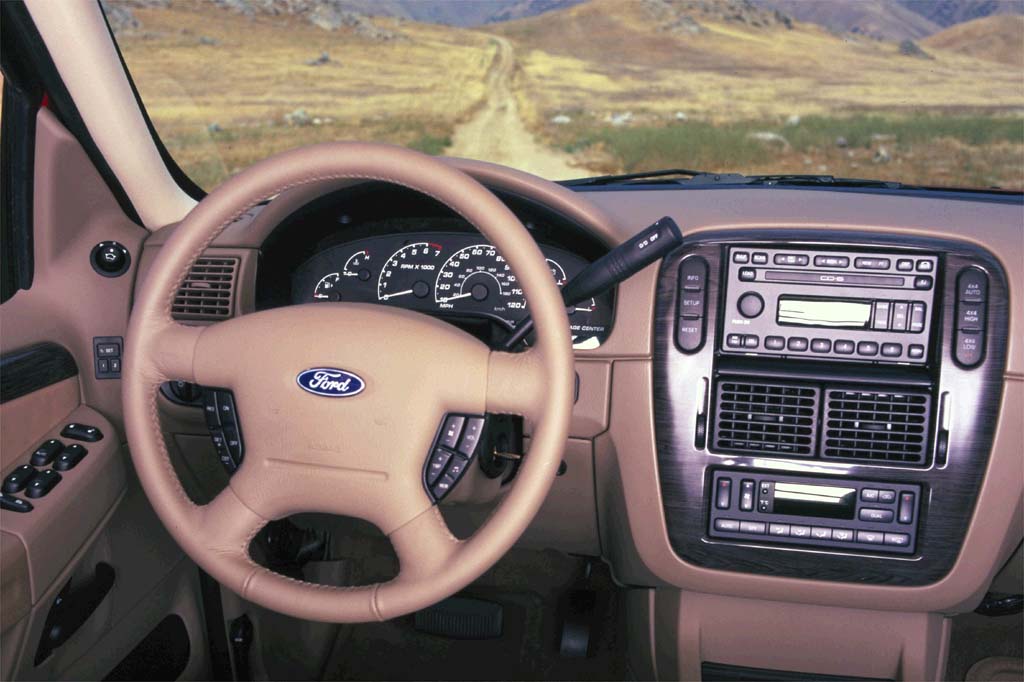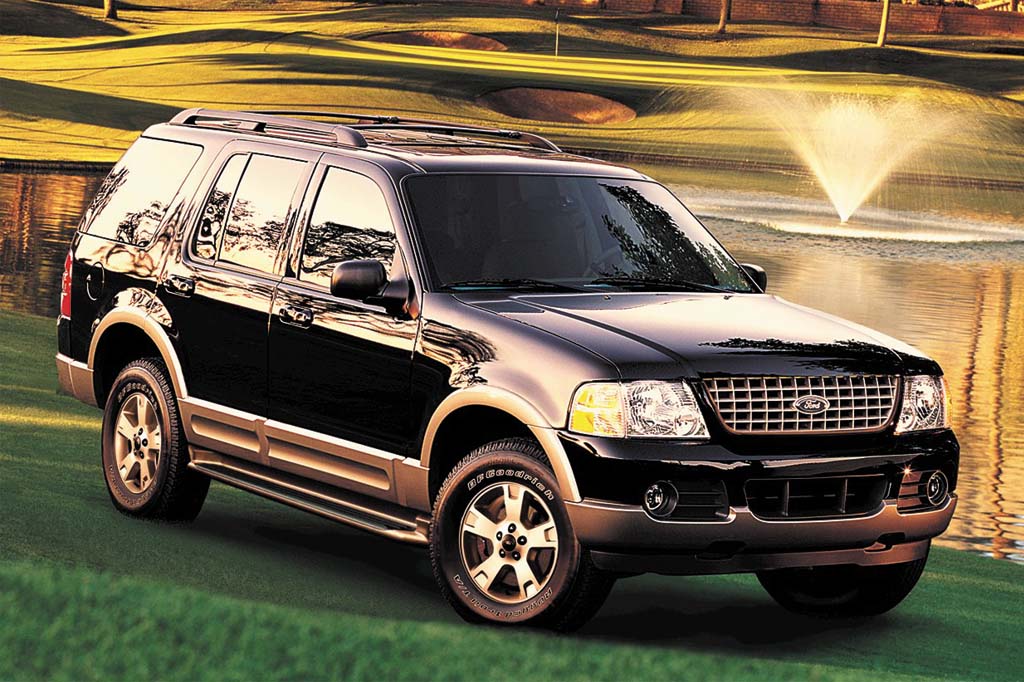| Midsize SUV; Built in USA |
|
|
| Good condition price range: $3,200 – $9,200* |

2002 Ford Explorer

2002 Ford Explorer

2002 Ford Explorer interior

2003 Ford Explorer

2004 Ford Explorer
| Pros: |
|
| Cons: |
|
Ford’s Explorer is a more-than-competent overall performer, with an unmatched array of available useful features: V8 power, seven-passenger seating, adjustable pedals, curtain airbags, DVD entertainment, rear-obstacle detection and antiskid system. Naturally, many of these items are likely to be absent in a specific secondhand model. The Mountaineer’s higher price brings more-expressive styling and slightly sharper handling feel, but in all, Explorer is the better value.
Overview
America’s top-selling sport-utility vehicle was redesigned as an early 2002 model, placed on sale in spring 2001. Ranking as a midsize model, the Explorer retained its body-on-frame construction, but gained new styling, a wider stance, longer wheelbase, and an independent rear suspension. A newly available third-row seat permitted seven-passenger capacity.
Mercury’s upscale Mountaineer was similarly revamped, but with more differentiated styling. Explorers and Mountaineers were among the few midsize SUVs with an independent rear suspension.
Explorers came with a V6 or V8 engine. The V6 teamed with either a manual or automatic transmission, while the V8 was offered only with a five-speed automatic. Explorers could have either rear-wheel drive or Ford’s Control Trac four-wheel drive, which could be left engaged on dry pavement and included low-range gearing.
Antilock all-disc brakes were standard. Torso side airbags were not available, but curtain side airbags were optional. Later in the model year, Ford offered sensors that could deploy the curtain airbags in a rollover accident. Ford’s Advance Trac antiskid system also became available later.
Top-level Eddie Bauer and Limited models included a driver’s seat memory, tilt/telescopic steering wheel, and power-adjustable pedals. A rear-obstacle warning system was optional.
Ford continued to use the Explorer’s 1995-2001 vintage design for the Explorer Sport two-door wagon and the Sport Trac four-door crew cab.
Yearly Updates
| 2003 Explorer All-wheel drive and a DVD entertainment system were newly available on America’s best-selling SUV for 2003. Explorers again were available with a third-row seat for seven-passenger capacity, and came with a V6 or V8 engine and a five-speed automatic transmission. Either engine could work with rear-wheel drive, Ford’s Control Trac 4WD (which could be left engaged on dry pavement), or for 2003, all-wheel drive. The AWD system was shared with the similar Mercury Mountaineer, Unlike Control Trac, it did not include low-range gearing. Torso side airbags remained unavailable, but the optional curtain side airbags covered the first and second seating rows, and were designed to deploy in side impacts and rollovers. For 2003, XLT models got a chrome-finished grille and a steel-look interior trim. A new NBX model featured a roof-mounted cargo basket, unique paint and trim, and a soft-lined cargo area with a storage bag. The optional DVD rear-seat entertainment system was available only with the curtain side airbags. |
| 2004 Explorer Ford’s antiskid system gained wider availability this year, offered with V6 as well as V8 models. Eddie Bauer and Limited editions could have new optional second-row bucket seats. |
| 2005 Explorer A standard antiskid system, Ford’s AdvanceTrac antiskid system with Roll Stability Control, and the loss of AWD availability mark 2005 for Explorer. |
